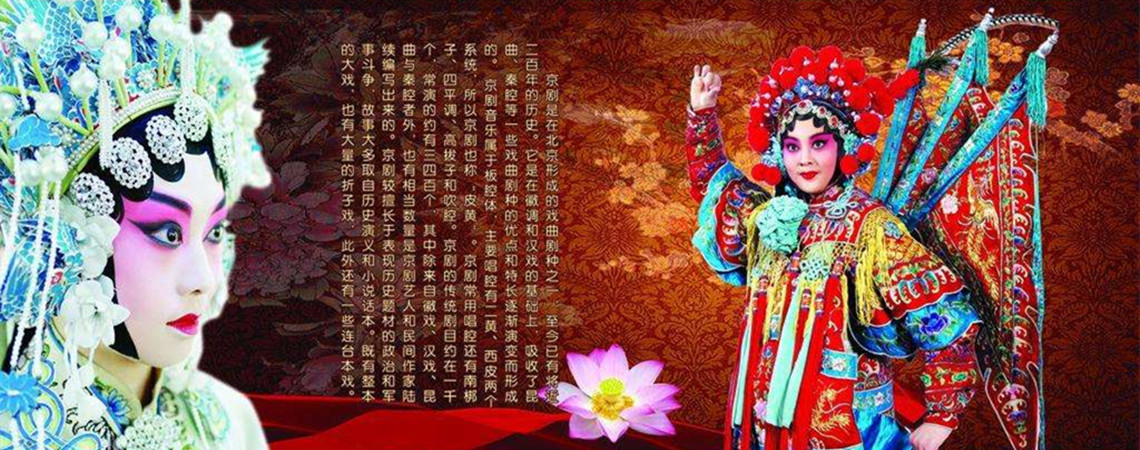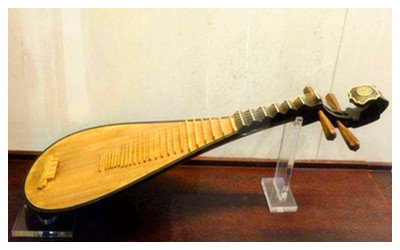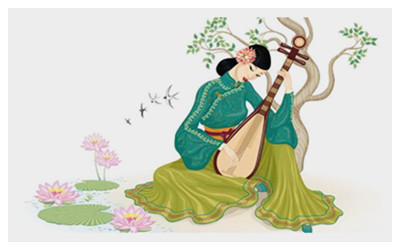Skype: neodalle-travel
Tel: +86 135 7447 2266
E-mail: sales@visitaroundchina.com

 Pipa (琵琶), also Lute, like the Chinese Guqin, is one of the most representative classical Chinese instruments of traditional Chinese culture. The Pipa first appeared in the Qin Dynasty in ancient China and has a history of over two thousand years.
Pipa (琵琶), also Lute, like the Chinese Guqin, is one of the most representative classical Chinese instruments of traditional Chinese culture. The Pipa first appeared in the Qin Dynasty in ancient China and has a history of over two thousand years.
History of the Pipa
The name of the Pipa came from two main plucking skills needed to play the instrument. "Pi means finger pushing, and Pa means finger pulling". Originally named after the loquat fruit, the earliest pipa known was found to have been made in the Qin Dynasty (221 BC – 206 BC).
By the the Tang Dynasty (618 - 907), the pipa had reached its summit. It was loved by everyone--from the royal court to the common folk--and it occupied the predominant place in the orchestra. Many well known writers and poets created poems and mentioned it in their works. Bai Juyi, the master poet, vividly depicted the performance like this: rapid and soft notes mingled were just like big and small pearls dropping onto the jade plates.
Further down to the Tang Dynasty, the Pipa was used as a general name for all Chinese plucked string instruments. At the same time, the Pipa was also introduced to other East Asian-countries.
Afterwards, the pipa underwent improvement in playing techniques and structure. Players then changed from holding the pipa transversely to holding it vertically, and from using a pick to using the fingers to pluck the strngs directly.
Today you can see similar instruments in Japan, North Korea and Vietnam. In modern times, the volume and resonance has also been improved.
Music for the Pipa
The Pipa is also known as the "King of folk musical instruments", and the "Chief of plucked string instruments". Often made of wood, its four strings were originally made with silk thread, but now wire or nylon is normally used. Often held vertically, the Pipa can be played solo, with an accompaniment or an ensemble.
 "Sunny Spring and White Snow" 阳春白雪 is one of the top ten most famous Chinese ancient classical pieces of music for the Pipa.
"Sunny Spring and White Snow" 阳春白雪 is one of the top ten most famous Chinese ancient classical pieces of music for the Pipa.
According to legend, the piece was composed by either Shi Kuang from the State of Jin or Liu Zijuan from the State of Qi during the Spring and Autumn Period. The existing melody consists of the two parts, "Sunny Spring" and "White Snow". The former renders the meaning of a sunny spring day when everything comes back to life, enjoying the warm breeze, while the latter is a piece that depicts cool and highbrow melodies from snow covered bamboo. Later, the term "Sunny Spring and White Snow" also became a metaphor for highbrow art forms such as classical music, calligraphy, painting and literature
 Ask Questions ?
Ask Questions ?